
Slay the Spire Switch Review
Slay the Spire brings a fascinating combination of roguelite concepts mixed with deck building gameplay. Initially starting life on Steam Early Access, Slay the Spire gained popularity on Valve’s digital platform, selling over 1.5 million copies. Now the indie title makes its way to Nintendo Switch, another game that sits well being played at home or on the go, thanks to the structure and streamlined design of the game.
There isn’t an overarching story, instead, Slay the Spire reminds me of some of those choose your own adventure books that ask you to turn to a page to see the outcome. Randomly generated maps are filled with enemies, bosses, campfires and surprise locations, the latter are where the random story events appear to make each trek through the game a little different. Dungeons are split into acts, but there is no actual exploration as such, since the game is very basic in its map design – it is literally a 2D piece of paper with multiple routes drawn on with the symbols as destinations, with these representing the different options mentioned above as a player either fights, open chests or selects an outcome in a scenario. Slay the Spire is simply about getting to the end without dying, no continues, no save points, it’s beat or be beaten, and that’s where the fun lies.
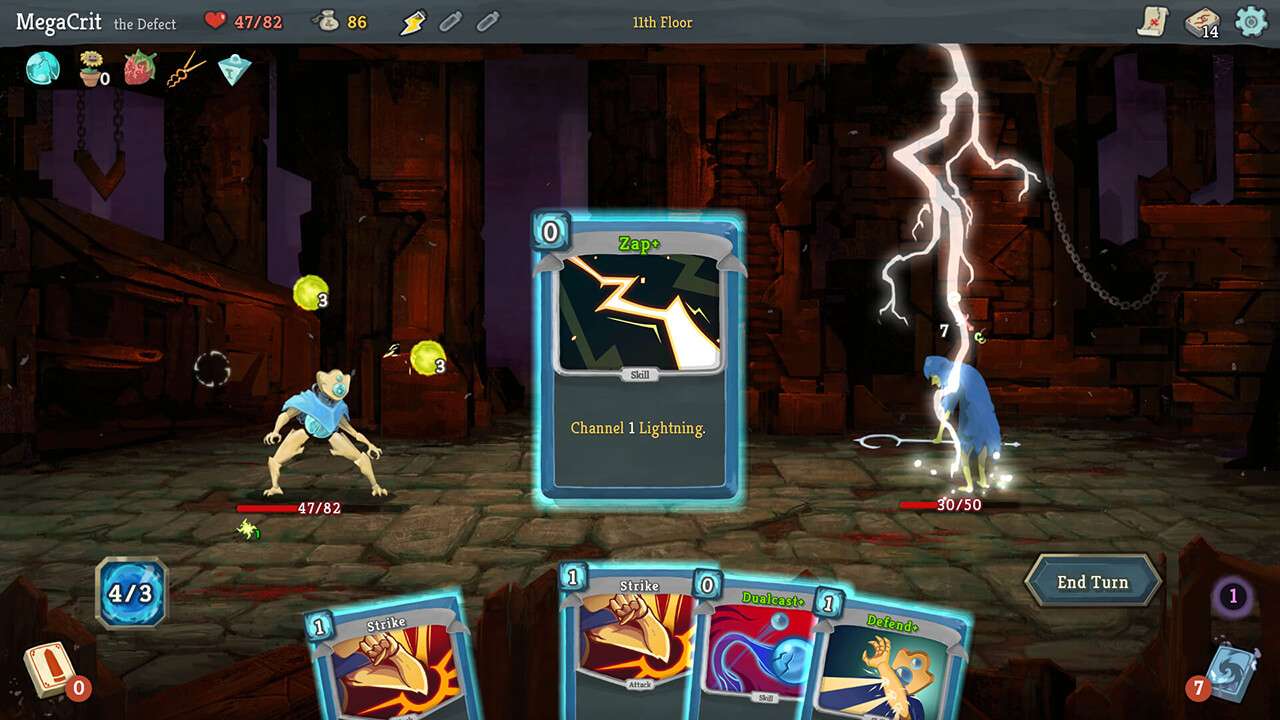
One area that helps mix up the core gameplay are the three playable characters. At the start, only the Ironclad is available, but after one play session this will unlock the Silent, which again, after one play then unlocks the final character, the Defect. All three heroes aren’t just visually different, they each have a different approach to combat, opening them up to various strengths and weaknesses, plus their decks are based around their strengths, giving them unique cards and strategies in combat. The Ironclad is a standard character, a warrior class to put it in role-playing game terms. This class has a trait called Burning Blood, which enables the Ironclad to heal 6 health points after each fight, while their deck is based around powerful strikes, defensive options and demonic energies. The Silent is more of the rogue of the game, based on poison attacks, with a trait that enables them to draw two extra cards at the start of combat.
The last hero, the Defect, is one where things become more interesting, and is what could be classed as the elementalist, with their additional attacks done through orbs that hover around the character. Orbs can be produced through cards and relics, and at the end of each turn in battle, the orbs activate – Lightning deals damage, Forst adds additional block, Dark is stackable damage that has to be evoked (discarded) to deal boosted damage, and Plasma supplies energy, meaning more cards can be used per turn. The Defect is the most complex of the bunch, but is the one that I found most interesting to experiment with, since this class has many options to approach the game’s combat thought its orb mechanics. In the end, no matter which character is picked, the fact the game has three different play styles/characters adds longevity. Each one has their own experience gains to unlock more powerful and distinct cards for their decks at each level until hitting the max at five.
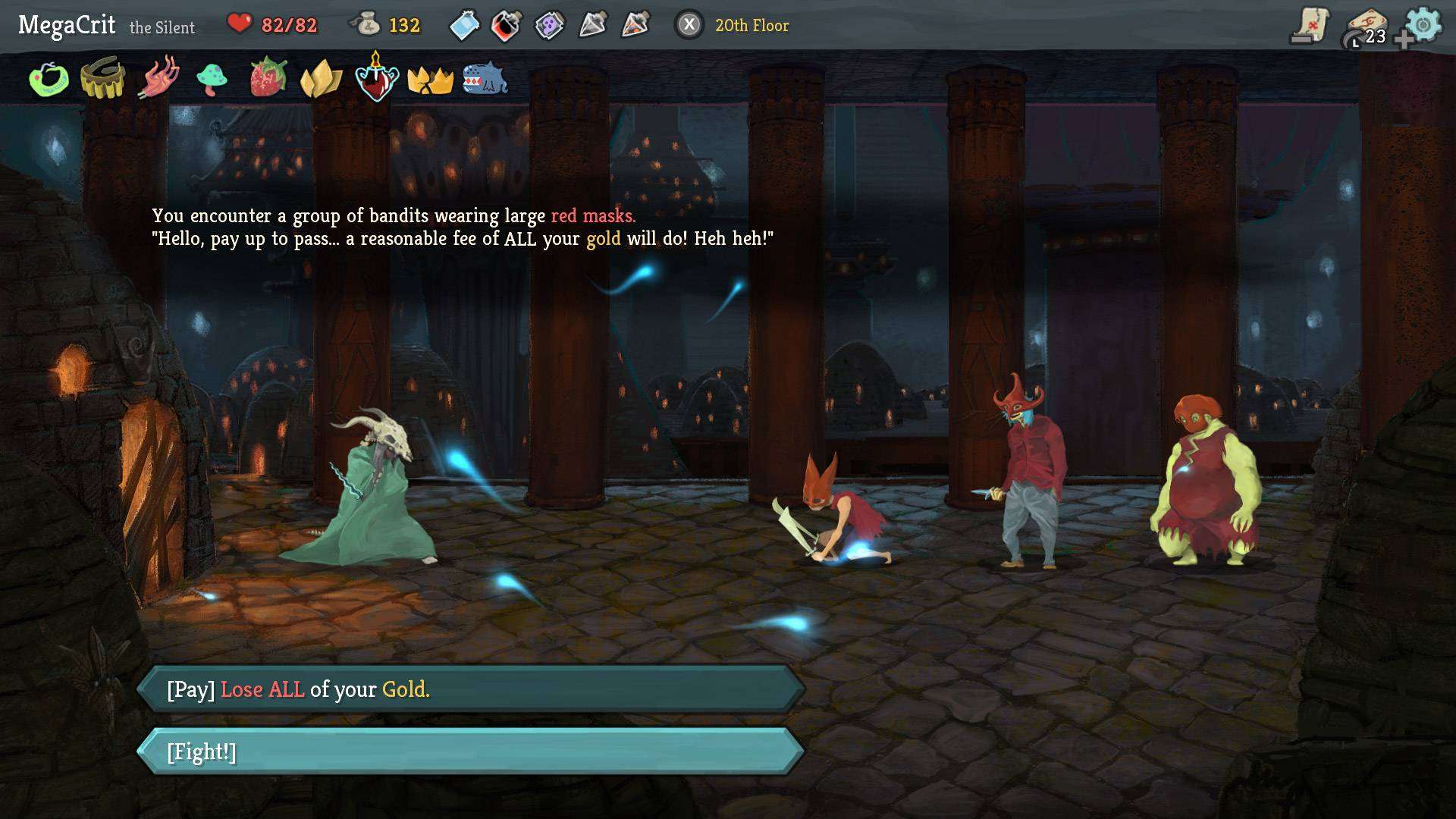
Character selection and the standard starting deck associated with them are one of the few guarantees the player has in each run that isn’t randomised. Once the adventure starts, the player meets a large whale of sorts that offers starting bonuses for the run. This can range from extra gold, cards, potions, upgrades or buffs, usually four random options are available and only one can be picked before moving onto the first act. Each character needs to defeat all three acts to work towards some extra bonus content. It doesn’t take long to beat the three acts, around 50 minutes, give or take, for each character, but as with all roguelites, it’s not the time spent on a single run that is key, but the time it took to get there through multiple attempts either with skill or the sheer luck of the map and new cards added to the deck during the run.
Luck is always going to be a factor in making it towards the end no matter how much planning players think they have prepared for. The option to pick a starting path at the beginning of each act lets players see the potential outcome of the journey to the top, explained with a legend at the side of the map that shows what each of the six symbols means. What do you do? Do you play it safe and fight enemies or do you take risks with random events and see if the reward was worth it?
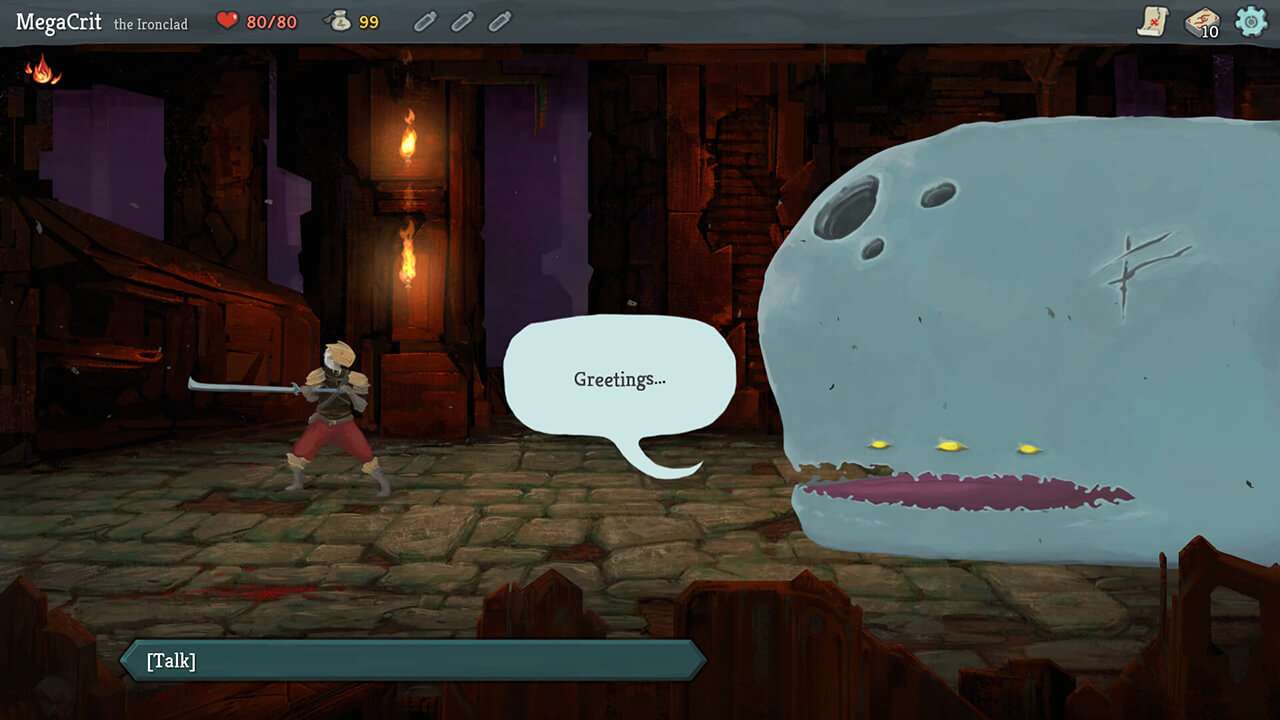
What makes Slay the Spire so compelling is the dynamics that alter combat coming from the various rewards. This has a focus on deck building, if somewhat different based on the random rewards, and so cards are one of the major elements of its turn-based combat. Fights are straightforward. At the beginning of a turn, a few cards from the deck are drawn and then can be picked to play in exchange for their energy cost, with the default of three being the normal energy to spend per turn. Enemies don’t follow this rule, since they have their own move set and will always behaviour similar no matter how many encounters have been met with them.
Early parts of a run are common to feature repeated use of similar cards. The starter deck is full of basic attacks, blocks and a couple of specials, but as progression is made in the same run, the deck expands (there doesn’t seem to be a max limit, or at least I have not met that yet and I’ve had decks filled with 40 plus cards). It becomes about maximising damage through card combos played after each other. This is one of the advantages of being a single player game – there is no worry about broken card combinations, since it upsets no one, and if you do manage to perform one such devastating move, it feels good seeing a boss go down after a couple of moves, more so if he brought an end to a previous run.
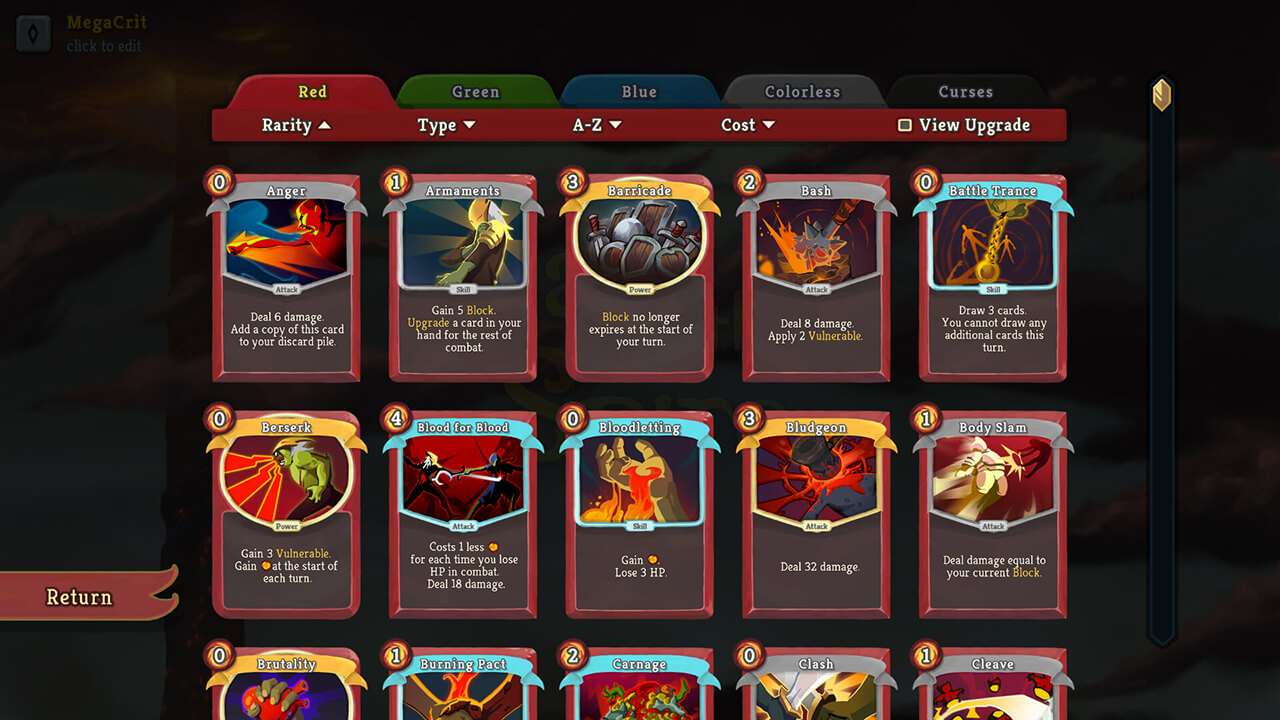
The longer a run lasts, the more thought has to go into what to keep and discard in the current deck. An option to keep all cards isn’t usually recommended, because the decks only return to hand once all of them have been drawn in fight. Cards are gained from winning fights, buying them from the shop or finding them in a random event, making it easy to be drown with choice, but ideally, getting the synergy between cards is what one should be aiming for, and so keeping a small deck between 15-25 cards means the synergy should always be hitting much faster than having to make way through a 40 plus deck.
Luck of the draw is also a factor, as on average, five random cards are drawn for each turn of the fight, so the synergy combination might not make an appearance. Duplicated cards in a deck or other modifiers that allow extra cards to be drawn can always help to improve the odds in getting the right set of cards to appear. Breaking down the combat, it mainly comes to picking between attack, block or a status changing card that might inflict vulnerability or poison. The fancier cards will cost more energy to burn, but modifiers on cards can add extra energy per turn.
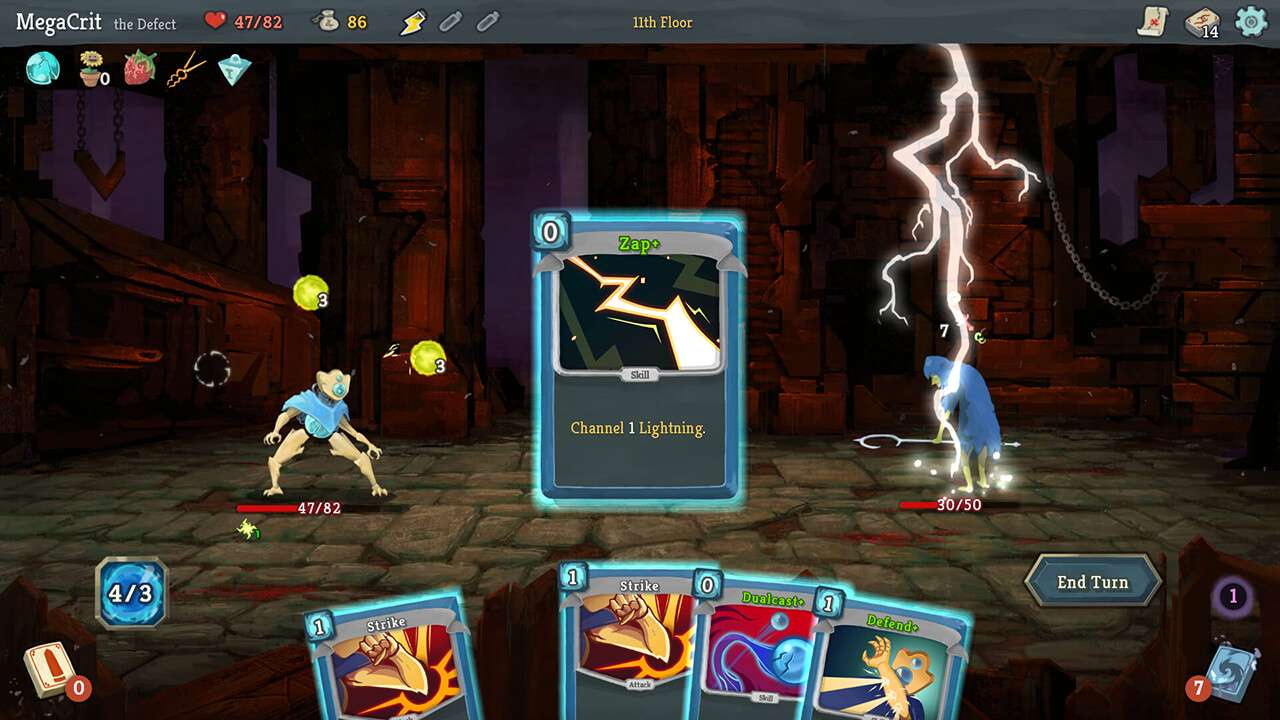
Relics are the other inclusion that modifiers the gameplay, gained in similar ways as cards, and are displayed at the top of the screen. There seems to be a unlimited amount for these as well, and again, just like cards, will vanish on death or at the end of a run. Relics can perform changes like starting each round with an extra energy unit, entering a room adds 30 gold (gold is used to spend in the shop), the start of every turn upgrades cards (normally done at the campfire as an option instead of recovering HP) or apply poison at the begging of every fight. These relics are incredibly handy, and getting the the rarer relics will make getting through the current run that bit more easier. All these elements come together for unpredictable situations, and ideally you want the best luck for the top card and relic combinations, but the game is about adapting to the hand that is given, changing the plan and making the most out of a poor run.
In fact, the game is rather generous in revealing what potential things will happen both in and out of combat. When taking part in the random events, the options reveal in brackets what will happen, both positive and negatives are displayed here – if doing an action reduces health but gains a relic, it states this to stop any nasty surprises. I found this helped me in willing to take part in these scenarios, even ones that would damage me, because I knew the reward and outcome and could calculate it against my current health status. In fights, the enemy will often have a symbol to show their intent for the next turn of combat, which helps players understand when an attack or buff is going to be performed by the random slimes, cultists, beasts and strange enemy designs that await a hero on every playthrough. For an added bonus, there is even an option to share a code to give to other players to attempt the exact same randomised run as yourself to benchmark how well everyone does. Outside of the campaign, the option of daily challenges and a custom mode to tweak certain variables of the game add more reasons to keep playing.

The move from PC to Switch is mostly positive, with the game running fine for the most part in both docked and handheld mode. The game’ art style is simple, but distinct, which means it doesn’t tax the Switch’s hardware, giving it a clean presentation, but that does not mean this is a perfect port. There are a few times in the game, mainly when there is a huge amount of cards being returned to the dealing deck, where the Switch is seemingly loading these in, showing huge frame rate drops and stutters as the cards swoop in. Due to the nature of the game’s turn-based combat, this does not hamper the gameplay, but it is something to noted about since it hampers the general quality of the port when comparing it to the other versions available. Added in for the handheld mode is the ability to use the touchscreen, a neat bonus that works well. On the audio side, music is decent enough, not really being the forefront of the overall packaging, but with constant levels being replayed, having songs that don’t drive someone to madness is a positive.
Slay the Spire brings to the Switch a neat blend of combat and card elements mixed with the addictive nature of roguelite designs. It is successful in being a game that is straightforward to understand, yet can happily eat away hours of the day if you let it. It’s also a perfect game to play in small bursts, due to a successful run lasting no longer than hour. It might be a roguelite in concept, but there are friendlier mechanics in play that reveal the transparency of the game’s intent, and it makes each trek to the spire that more entertaining, while keeping those random, stressful elements intact which will get players riled up with emotion. It might not be the best version of Slay the Spire, but it’s the only one you can take on the go at the moment, being ensnared in its fun, rewarding gameplay, which can lead to missing a bus stop or two on the way to work without feeling all that bad about it.
